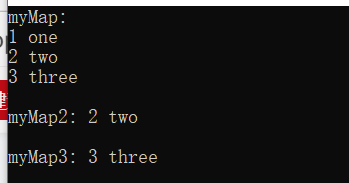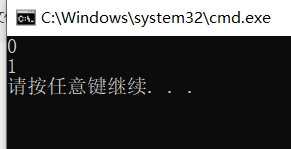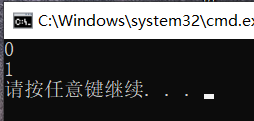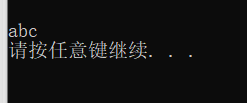C++:map用法
一、map基本用法
键值对
第一个参数为键的类型,第二个参数为值的类型。
- 源代码
#include <iostream>
#include <string>
#include <map>
using namespace std;
int main() {
map<int,string> ::iterator iter; //迭代器iterator:变量iter的数据类型是由map<int,string>定义的iterator类型
map<int,string> myMap;
//添加数据
myMap[1] = "one";
myMap[2] = "two";
myMap[3] = "three";
//遍历map
iter = myMap.begin(); //指向map首对元素
cout<<"myMap:"<<endl;
for (iter; iter != myMap.end(); iter++) { //myMap.end()指向map最后一对元素的后一对元素
cout << (*iter).first << " " << (*iter).second << "\n";
}
cout<<endl;
//构造map
map<int, string> myMap2(myMap.begin(), myMap.end());//用myMap指定范围内的元素对,构造myMap2
map<int, string> myMap3(myMap);//用myMap构造myMap2
iter=myMap2.begin();
iter++;
cout<<"myMap2: "<<(*iter).first<<" " << (*iter).second<<endl<<endl;
iter=myMap3.begin();
iter++;
iter++;
cout<<"myMap3: "<<(*iter).first<<" " << (*iter).second<<endl;
return 0;
}
- 运行结果:

二、map元素的默认值
当map内元素值为int类型或常量时,默认值为0。
当为String类型时,默认值不明,不显示。
- map内元素值为int类型
#include <iostream>
#include <map>
using namespace std;
int main(){
map<int,int> table;
table[1]=1;
cout<<table[0]<<endl;
cout<<table[1]<<endl;
return 0;
}
- 运行结果:

- map内元素值为常量类型
#include <iostream>
#include <map>
using namespace std;
enum Symbols { //第一个枚举元素默认值为0,后续元素递增+1。
// 终结符号 Terminal symbols:TS
TS_I, // i
TS_PLUS, // +
TS_MULTIPLY, // *
TS_L_PARENS, // (
TS_R_PARENS, // )
TS_EOS, // #
TS_INVALID, // 非法字符
// 非终结符号 Non-terminal symbols:NS
NS_E, // E
NS_T, // T
NS_F // F
};
int main(){
map<int,enum Symbols> table;
table[1]=TS_PLUS;
cout<<table[0]<<endl;
cout<<table[1]<<endl;
return 0;
}
- 运行结果:

- map内元素值为string类型
#include <iostream>
#include <map>
#include <string>
using namespace std;
int main(){
map<int,string> table;
table[1]="abc";
cout<<table[0]<<endl;
cout<<table[1]<<endl;
return 0;
}- 运行结果:






















 80
80











 被折叠的 条评论
为什么被折叠?
被折叠的 条评论
为什么被折叠?








